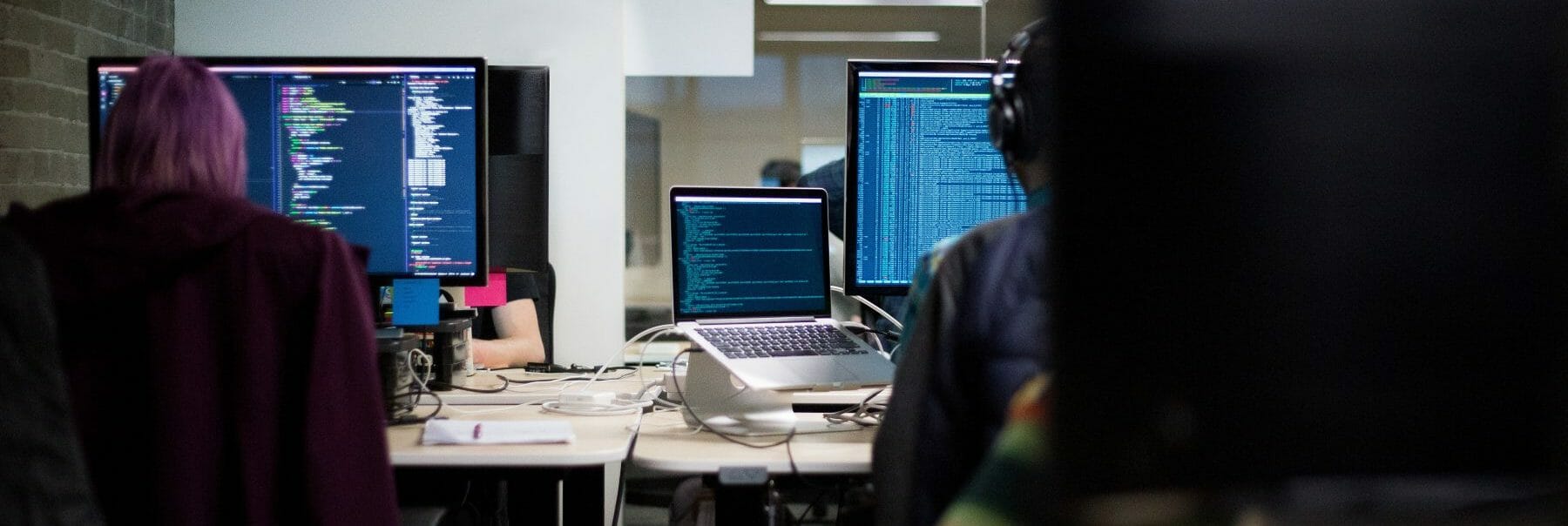
Articles
Editor’s Picks
Industry News
K-12
How Bad Is Screen Time? Current Research and Misinformation
By Henry Kronk
March 01, 2019
In recent years, many journalists and researchers have concluded there’s a covert villain that has infiltrated our digital society. Many believe it has made us less intelligent. It has diminished the social skills of young people, and even increased self-harm and suicide ideation. It brings with it plagues of obesity, indifference to violence, and insomnia. You can adjust its brightness, but you can’t adjust the hold it has over you. It’s your screen.
Screen time and its negative effects have captivated doctors, researchers, psychologists, and families around the world. There’s a saying in journalism: if it bleeds, it leads. That might be corrected for the digital age to say: if it scares, it gets shared. Many reports of screen time are scary. They describe a silent poison that we can’t escape. Professionals around the world often spend the majority of their day in front of their computers. Young people spend even more time on social media sites, gaming, and streaming TV shows. And countless edtech initiatives want to put more devices in the hands of more children to harness digital tools for education. So if screen time actually leads to all the negative effects described by some stories and reports, something needs to change. And a lot of people are already convinced this is true.
But among the scientific community, the consensus is a resounding “we don’t know.” Many studies have shown screen time to have particular negative effects under particular conditions. Other studies have shown screens make particular improvements under particular conditions. This article highlights the often scary misinformation circulating about screen time and surveys some of the most recent research on the subject.
First, A Few Clarifications and Qualifications
Screen time is generally treated as a catch-all term to describe time spent in front of computers, mobile devices, and televisions. The term does not distinguish between time spent watching TV, playing video games, interacting with others on social media, researching for a school paper, playing chess, or online shopping. There’s a growing number of scientists who have begun to distinguish between active vs. passive screen time. But in 2019, ‘screen time’ continues to largely maintain its general, umbrella definition.
When experts discuss screen time, furthermore, there are three general age breakdowns they tend to follow: ages 0-5, 5-17, and 18+. Much research has suggested that screen time has a greater effect on younger, developing brains.
Results From a Google Search
To find out what kind of information is out there on screen time, I searched ‘negative effects of screen time” on February 20th. The following were the top three results:
- “Gray Matters: Too Much Screen Time Damages the Brain” by Victoria L. Dunckley M.D. in Psychology Today published on February 27, 2014.
- “The Harmful Effects of Too Much Screen Time for Kids” by Amy Morin, LCSW in Very Well Family published November 3, 2018.
- “Kids and Screen Time: What Does the Research Say?” by Juana Summers in NPR published on August 28, 2014.
To begin with Dr. Dunckley, her article is published via a generally respected outlet and she actually cites a great deal of research, along with her own anecdotal observations, to conclude that “excessive screen-time appears to impair brain structure and function.” A closer look, however, reveals that Dunckley uses some highly misleading tactics to arrive at her conclusion. Thirteen of the 16 studies she cites in her article refer specifically to individuals with online, video game, or gambling addictions.
This is confusing, considering she begins her article writing, “But what about kids who aren’t ‘addicted’ per se? Addiction aside, a much broader concern that begs awareness is the risk that screen time is creating subtle damage even in children with ‘regular’ exposure …” Addiction is not pushed aside in this article; it’s the primary focus of the only vetted evidence presented. Dunckley, however, uses their conclusions to describe screen time more generally.

Moving on, Amy Morin brings significantly less scientific rigor to her article published in Very Well Family. Morin, a licensed clinical social worker, writes that research shows that too much screen time leads to obesity, sleep problems, behavior problems, educational problems, and violence. That list of five outcomes contains 4 hyperlinks, each of which sends readers to other Very Well Family articles. None of these focus on screen time—in fact, none of the articles that supposedly back up Morin’s points even contain the word ‘screen.’ The only reputable information cited directly comes from the American Academy of Pediatrics.
Juana Summers writing for NPR provides a much more measured take on screen time. In addition, she interviews numerous researchers and cites numerous studies, each of which relate directly to screen time.
In other words, one out of three of the top three articles on screen time present relevant and peer-reviewed information. One out of three is not a very good record.
A Massive Study by the National Institute of Health Is Currently Underway
There is luckily a federally funded effort currently underway that does not suffer from misleading sources or a lack of expertise. The National Institute of Health is currently conducting a massive study across 21 sites. When all is said and done, the team hopes to scan the brains of 11,000 children once every twelve months for a duration of ten years.
In December, the team published the first wave of brain scans of 4,500 participants, along with their other self-reported data. Anderson Cooper interviewed Dr. Gaya Dowling for 60 Minutes about the study.
The following is a segment of the interview:
Dr. Gaya Dowling: What we can say is that this is what the brains look like of kids who spend a lot of time on screens. And it’s not just one pattern.
Anderson Cooper: That’s fascinating.
Dr. Gaya Dowling: It’s very fascinating.
The colors show differences in the nine and ten-year-olds’ brains. The red color represents premature thinning of the cortex. That’s the wrinkly outermost layer of the brain that processes information from the five senses.
Anderson Cooper: What is a thinning of the cortex mean?
Dr. Gaya Dowling: That’s typically thought to be a maturational process. So what we would expect to see later is happening a little bit earlier.
Anderson Cooper: Should parents be concerned by that?
Dr. Gaya Dowling: We don’t know if it’s being caused by the screen time. We don’t know yet if it’s a bad thing. It won’t be until we follow them over time that we will see if there are outcomes that are associated with the differences that we’re seeing in this single snapshot.
Since the 60 Minutes report aired in December, the Royal College of Paediatrics and Child Health in the UK has come to a similar conclusion.
“Because the effect of screen time depends so much on context, and the uncertain nature of the evidence, it is impossible to give comprehensive national guidance or limits,” it said.
“Evidence is weak for a threshold to guide children and parents to the appropriate level of screen time, and we are unable to recommend a cut-off for children’s screen time overall.”
But it recommended that children did not use screens for the hour before their bedtime.
Dr. Max Davie, the officer for health promotion for the Royal College of Paediatrics and Child Health, said that parents should “stop worrying” as much about screen time. As Dr. Davie says, “We want to cut through that and say ‘actually if you’re doing OK and you’ve answered these questions of yourselves and you’re happy, get on and live your life and stop worrying.
Featured Image: Hack Capital, Unsplash.









Keep it up. Really appreciate the efforts.